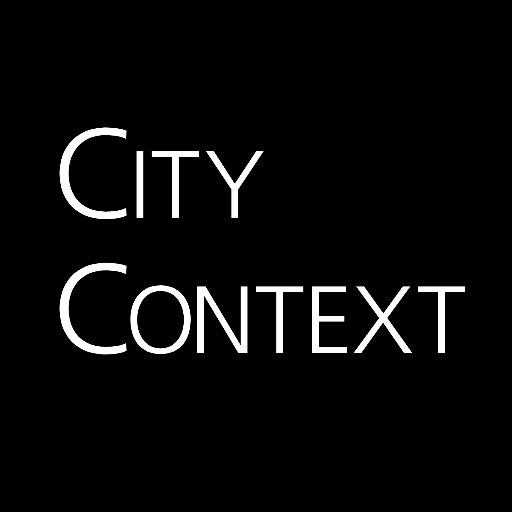Mock sample for your project: CarbonDoomsDay API
Integrate with "CarbonDoomsDay API" from carbondoomsday.com in no time with Mockoon's ready to use mock sample

CarbonDoomsDay
carbondoomsday.com
Version: v1
Speed up your application development by using "CarbonDoomsDay API" ready-to-use mock sample. Mocking this API will help you accelerate your development lifecycles and allow you to stop relying on an external API to get the job done. No more API keys to provision, accesses to configure or unplanned downtime, just work.
Enhance your development infrastructure by mocking third party APIs during integrating testing.
Description
A real-time RESTish web API for worldwide carbon dioxide levels.
Other APIs in the same category
Maharashtra State Board of Secondary and Higher Secondary Education, Maharashtra
apisetu.gov.in
Class X and XII marksheets and passing certificates of Maharashtra State Board of Secondary and Higher Secondary Education (https://mahahsscboard.maharashtra.gov.in/) are available in DigiLocker for years 1990 to 2017.
Climate FieldView Platform APIs
climate.com
Last Modified: Thu Oct 29 12:30:46 PDT 2020
All endpoints are only accessible via HTTPS.
All API endpoints are located at https://platform.climate.com (e.g.
https://platform.climate.com/v4/fields).
The authorization token endpoint is located at
https://api.climate.com/api/oauth/token.
Troubleshooting
X-Http-Request-Id response header will be returned on every call,
successful or not. If you experience an issue with our api and need
to contact technical support, please supply the value of the X-Http-Request-Id
header along with an approximate time of when the request was made.
Request Limits
When you’re onboarded to Climate’s API platform, your x-api-key is assigned a custom usage plan. Usage plans are unique to each partner and have the following key attributes:
Throttling information
burstLimit: Maximum rate limit over a period ranging from 1 second to a few seconds
rateLimit: A steady-state rate limit
Quota information
Limit: The maximum number of requests that can be made in a given month
When the request rate threshold is exceeded, a 429 response code is returned. Optionally, the Retry-After header may be returned:
Following are examples of rate limit errors:
Rate limit exceeded:
HTTP/1.1 429
Content-Type: application/json
Content-Length: 32
{"message":"Too Many Requests"}
Quota exhausted:
HTTP/1.1 429
Content-Type: application/json
Content-Length: 29
{"message":"Limit Exceeded"}
Pagination
Pagination is performed via headers. Any request which returns a "results"
array may be paginated. The following figure shows how query results are laid out with
X-Limit=4 and no filter applied.
If there are no results, a response code of 304 will be returned.
If the response is the last set of results, a response code of 200 or
206 will be returned.
If there are more results, a response code of 206 will be returned.
If X-Next-Token is provided in the request headers but the token has
expired, a response code of 409 will be returned. This is only applicable
for some endpoints; see specific endpoint documentation below.
X-Limit
The page size can be controlled with the X-Limit header. Valid values are
1-100 and defaults to 100.
X-Next-Token
If the results are paginated, a response header of X-Next-Token will be
returned. Use the associated value in the subsequent request (via the X-Next-Token
request header) to retrieve the next page. The following sequence diagram shows how to
use X-Next-Token to fetch all the records.
Chunked Uploads
Uploads larger than 5MiB (5242880 bytes) must be done in 5MiB chunks
(with the exception of the final chunk). Each chunk request MUST contain a
Content-Range header specifying the portion of the upload, and a Content-Type
header specifying binary content type (application/octet-stream). Range
uploads must be contiguous. The maximum upload size is capped at 500MiB (524288000 bytes).
Chunked Downloads
Downloads larger than 5MiB (5242880 bytes) must be done in 1-5MiB
chunks (with the exception of the final chunk, which may be less than 1MiB).
Each chunk request MUST contain a Range header specifying the requested portion of the download,
and an Accept header specifying binary and json content types (application/octet-stream,application/json)
or all content types (/).
Drivers
If you need drivers to process agronomic data, download the ADAPT plugin below. We only support the plugin in the Windows environment, minimum is Windows 7 SP1.
For asPlanted, asHarvested and asApplied data:
ADAPT Plugin
Release notes can be found here.
Download and use of the ADAPT plugin means that you agree to the EULA for use of the ADAPT plugin.
Please review the EULA (last updated on June 6th, 2019) before download and use of the ADAPT plugin.
For more information, please refer to:
ADAPT Resources
ADAPT Overview
ADAPT FAQ
ADAPT Videos
Sample Test Data
Sample agronomic data:
asPlanted and asHarvested data
asApplied data set 1
asApplied data set 2
To upload the sample data to your account, please follow the instructions in this link.
Sample soil data:
Sample soil data
All endpoints are only accessible via HTTPS.
All API endpoints are located at https://platform.climate.com (e.g.
https://platform.climate.com/v4/fields).
The authorization token endpoint is located at
https://api.climate.com/api/oauth/token.
Troubleshooting
X-Http-Request-Id response header will be returned on every call,
successful or not. If you experience an issue with our api and need
to contact technical support, please supply the value of the X-Http-Request-Id
header along with an approximate time of when the request was made.
Request Limits
When you’re onboarded to Climate’s API platform, your x-api-key is assigned a custom usage plan. Usage plans are unique to each partner and have the following key attributes:
Throttling information
burstLimit: Maximum rate limit over a period ranging from 1 second to a few seconds
rateLimit: A steady-state rate limit
Quota information
Limit: The maximum number of requests that can be made in a given month
When the request rate threshold is exceeded, a 429 response code is returned. Optionally, the Retry-After header may be returned:
Following are examples of rate limit errors:
Rate limit exceeded:
HTTP/1.1 429
Content-Type: application/json
Content-Length: 32
{"message":"Too Many Requests"}
Quota exhausted:
HTTP/1.1 429
Content-Type: application/json
Content-Length: 29
{"message":"Limit Exceeded"}
Pagination
Pagination is performed via headers. Any request which returns a "results"
array may be paginated. The following figure shows how query results are laid out with
X-Limit=4 and no filter applied.
If there are no results, a response code of 304 will be returned.
If the response is the last set of results, a response code of 200 or
206 will be returned.
If there are more results, a response code of 206 will be returned.
If X-Next-Token is provided in the request headers but the token has
expired, a response code of 409 will be returned. This is only applicable
for some endpoints; see specific endpoint documentation below.
X-Limit
The page size can be controlled with the X-Limit header. Valid values are
1-100 and defaults to 100.
X-Next-Token
If the results are paginated, a response header of X-Next-Token will be
returned. Use the associated value in the subsequent request (via the X-Next-Token
request header) to retrieve the next page. The following sequence diagram shows how to
use X-Next-Token to fetch all the records.
Chunked Uploads
Uploads larger than 5MiB (5242880 bytes) must be done in 5MiB chunks
(with the exception of the final chunk). Each chunk request MUST contain a
Content-Range header specifying the portion of the upload, and a Content-Type
header specifying binary content type (application/octet-stream). Range
uploads must be contiguous. The maximum upload size is capped at 500MiB (524288000 bytes).
Chunked Downloads
Downloads larger than 5MiB (5242880 bytes) must be done in 1-5MiB
chunks (with the exception of the final chunk, which may be less than 1MiB).
Each chunk request MUST contain a Range header specifying the requested portion of the download,
and an Accept header specifying binary and json content types (application/octet-stream,application/json)
or all content types (/).
Drivers
If you need drivers to process agronomic data, download the ADAPT plugin below. We only support the plugin in the Windows environment, minimum is Windows 7 SP1.
For asPlanted, asHarvested and asApplied data:
ADAPT Plugin
Release notes can be found here.
Download and use of the ADAPT plugin means that you agree to the EULA for use of the ADAPT plugin.
Please review the EULA (last updated on June 6th, 2019) before download and use of the ADAPT plugin.
For more information, please refer to:
ADAPT Resources
ADAPT Overview
ADAPT FAQ
ADAPT Videos
Sample Test Data
Sample agronomic data:
asPlanted and asHarvested data
asApplied data set 1
asApplied data set 2
To upload the sample data to your account, please follow the instructions in this link.
Sample soil data:
Sample soil data
Bajaj Allianz General Insurance Company Ltd. (BAGIC)
apisetu.gov.in
Insurance policies such as health, car, two wheeler, property etc. issued by BAGIC are available to be pulled by citizens.

CarbonDoomsDay
carbondoomsday.com
A real-time RESTish web API for worldwide carbon dioxide levels.
Aviation Radiation API
amentum.space
Our atmosphere protects us from a hostile space radiation environment comprising high energy particles of solar and intergalactic origin. Solar radiation is significant during unpredictable and short lived solar flares and coronal mass ejections (CMEs); however, galactic cosmic radiation (GCR) is omnipresent. The GCR intensity varies with latitude, longitude, and time due to effects of solar activity on the interplanetary magnetic field, as well as the Earth's magnetic field. Space radiation collides with gases in the atmosphere, leading to a complex shower of high energy radiation, the intensity and composition of which varies spatially and temporally. Excessive exposure to radiation can damage DNA and lead to long-term health effects such as an increased risk of cancer. Resulting radiation levels at commercial aircraft altitudes are greater than at sea level due. Aircrew are classified as radiation workers in some countries; however, planning to limit their exposure, and monitoring, is generally lacking. Both real-time measurements and predictive models of radiation in the atmosphere are important to mitigate the radiation risk crew.
We host a RESTful API to models of cosmic ray induced ionising radiation in the atmosphere. The PARMA or CARI7 endpoints can be used to calculate Effective Dose or Ambient Dose Equivalent at a point.
The Route Dose API calculates the same quantities along a great circle route between two airports using CARI7.
API requests must contain a key "API-Key" in the header (see code samples). Obtain a key from here.
Help us improve the quality of our web APIs by completing our 2 minute survey here.
Amentum Pty Ltd is not responsible nor liable for any loss or damage of any sort incurred as a result of using the API.
Copyright Amentum Pty Ltd 2021.
We host a RESTful API to models of cosmic ray induced ionising radiation in the atmosphere. The PARMA or CARI7 endpoints can be used to calculate Effective Dose or Ambient Dose Equivalent at a point.
The Route Dose API calculates the same quantities along a great circle route between two airports using CARI7.
API requests must contain a key "API-Key" in the header (see code samples). Obtain a key from here.
Help us improve the quality of our web APIs by completing our 2 minute survey here.
Amentum Pty Ltd is not responsible nor liable for any loss or damage of any sort incurred as a result of using the API.
Copyright Amentum Pty Ltd 2021.
Canada Holidays API
This API that lists all 28 public holidays for all 13 provinces and territories in Canada, including federal holidays.

City Context
citycontext.com
City Context provides a straightforward API to access UK Open Data: crime statistics, schools, demographics and more.
Karnataka Department of Transport, Karnataka
apisetu.gov.in
Driving License (DL) & Vehicle Registration Certificate (RC) as issued by Transport Department, Government of Karnataka (http://transport.karnataka.gov.in) can be pulled by citizens into their DigiLocker accounts.

U.S. EPA Enforcement and Compliance History Online (ECHO) - Clean Water Act (CWA) Rest Services
Enforcement and Compliance History Online (ECHO) is a tool developed and maintained by EPA's Office of Enforcement and Compliance Assurance for public use. ECHO provides integrated compliance and enforcement information for over 1 million regulated facilities nationwide.
CWA Rest Services provides multiple service endpoints, each with specific capabilities, to search and retrieve data on facilities regulated under the Clean Water Act (CWA) and managed under the National Pollutant Discharge Elimination System (NPDES) program. The returned results reflect data drawn from EPA's ICIS-NPDES database.
\
The getfacilities, getmap, getqid, and getdownload end points are meant to be used together, while the enhanced getfacilityinfo end point is self contained.
The getfacilityinfo end point returns either an array of state, county or zip clusters with summary statistics per cluster or an array of facilities.
\
The recommended use scenario for getfacilities, getqid, getmap, and getdownoad is:
\
1) Use getfacilities to validate passed query parameters, obtain summary statistics and to obtain a queryid (QID). QIDs are time sensitive and will be valid for approximately 30 minutes.
2) Use get_qid, with the returned QID, to paginate through arrays of facility results.
3) Use get_map, with the returned QID, to zoom in/out and pan on the clustered and individual facility coordinates that meet the QID query criteria.
4) Use get_download, with the returned QID, to generate a Comma Separated Value (CSV) file of facility information that meets the QID query criteria.
\
\
Use the qcolumns parameter to customize your search results. Use the Metadata service endpoint for a list of available output objects, their Column Ids, and their definitions to help you build your customized output.
\
Additional ECHO Resources: Web Services, About ECHO's Data, Data Downloads
CWA Rest Services provides multiple service endpoints, each with specific capabilities, to search and retrieve data on facilities regulated under the Clean Water Act (CWA) and managed under the National Pollutant Discharge Elimination System (NPDES) program. The returned results reflect data drawn from EPA's ICIS-NPDES database.
\
The getfacilities, getmap, getqid, and getdownload end points are meant to be used together, while the enhanced getfacilityinfo end point is self contained.
The getfacilityinfo end point returns either an array of state, county or zip clusters with summary statistics per cluster or an array of facilities.
\
The recommended use scenario for getfacilities, getqid, getmap, and getdownoad is:
\
1) Use getfacilities to validate passed query parameters, obtain summary statistics and to obtain a queryid (QID). QIDs are time sensitive and will be valid for approximately 30 minutes.
2) Use get_qid, with the returned QID, to paginate through arrays of facility results.
3) Use get_map, with the returned QID, to zoom in/out and pan on the clustered and individual facility coordinates that meet the QID query criteria.
4) Use get_download, with the returned QID, to generate a Comma Separated Value (CSV) file of facility information that meets the QID query criteria.
\
\
Use the qcolumns parameter to customize your search results. Use the Metadata service endpoint for a list of available output objects, their Column Ids, and their definitions to help you build your customized output.
\
Additional ECHO Resources: Web Services, About ECHO's Data, Data Downloads

GeoMark Web Service REST API
The Geomark Web Service allows you to create and share geographic areas of interest over the web in a variety of formats and coordinate systems. This service is especially helpful when you need to share an area of interest with people who require that the data be in a different format, or they use different mapping software.
Please note that you may experience issues when submitting requests to the delivery or test environment if using this OpenAPI specification in other API console viewers.
Please note that you may experience issues when submitting requests to the delivery or test environment if using this OpenAPI specification in other API console viewers.
COVID-19 data API
covid19-api.com